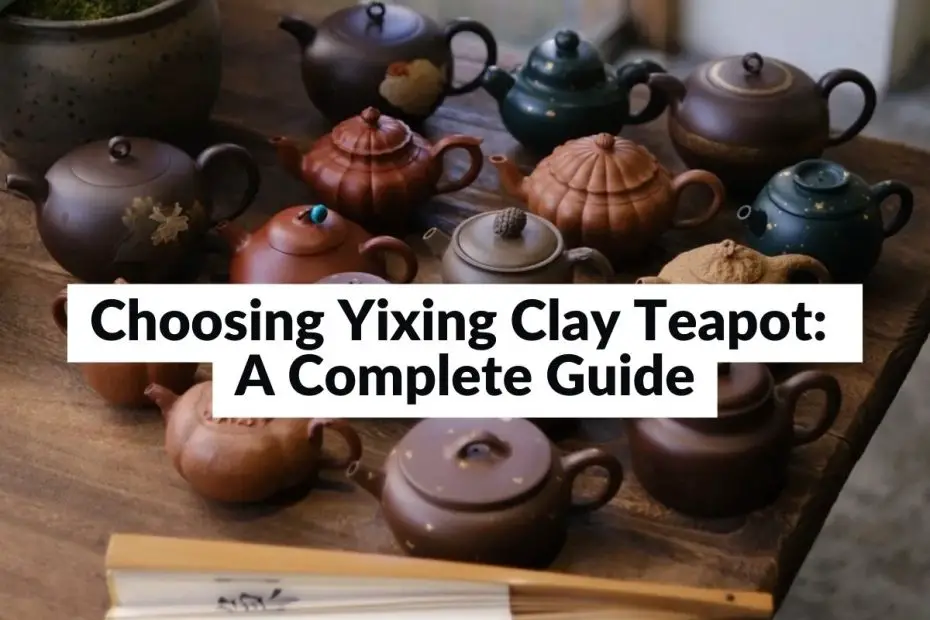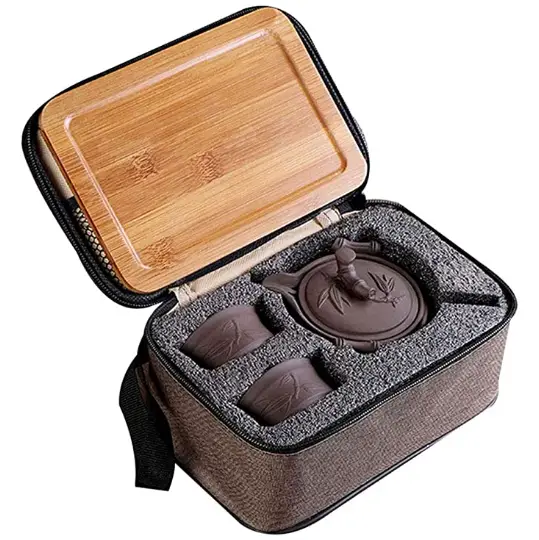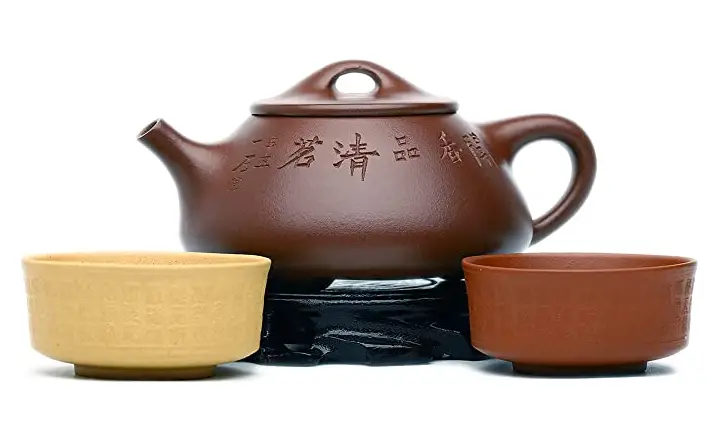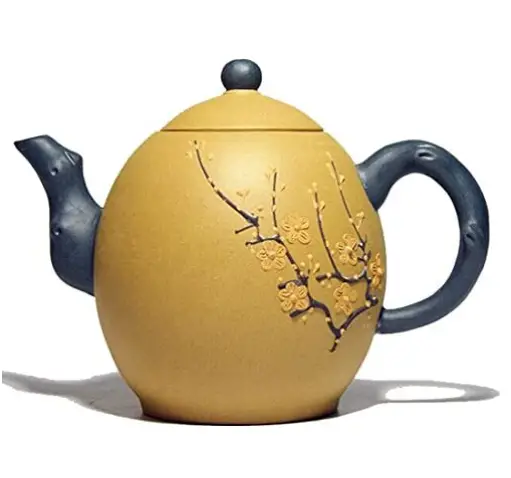A Yixing Clay Teapot is a small, unglazed teapot that is made from clay found in the Yixing region of China.
These teapots have been used for centuries by tea enthusiasts, and they are highly sought after for their ability to enhance the flavor and aroma of tea.
In this comprehensive guide, we will explore everything you need to know about Yixing Clay Teapots, including how to choose the perfect one for your needs.
What is Yixing Clay?
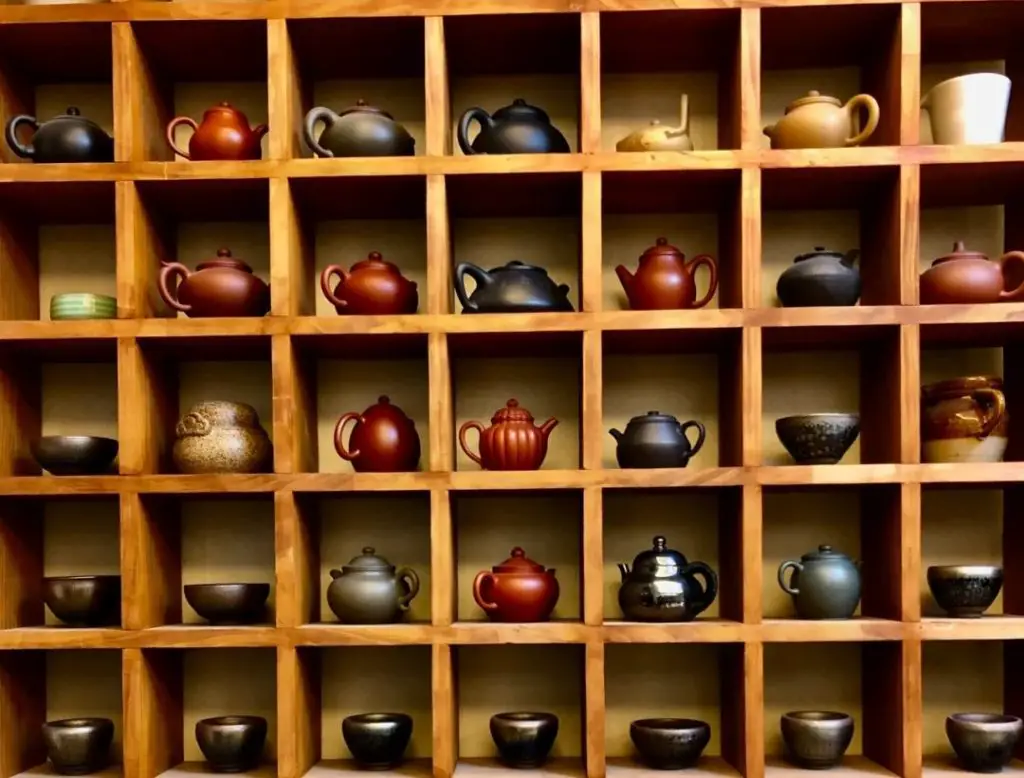
Yixing clay is sourced from the town of Yixing in Jiangsu Province, located in the Yangtze River delta.
This type of clay is a combination of minerals like kaolin, mica, and quartz and contains a high concentration of iron oxide.
Yixing clay is predominantly used in the production of teaware and is a crucial element in Gong Fu tea culture.
The term Zi Sha, which translates to “purple mud,” is the collective name for all Yixing clays.
Yixing Teapot is a perfect gift for your business partner. Here are more business TEA GIFT IDEAS.Choosing the Perfect Yixing Clay Teapot
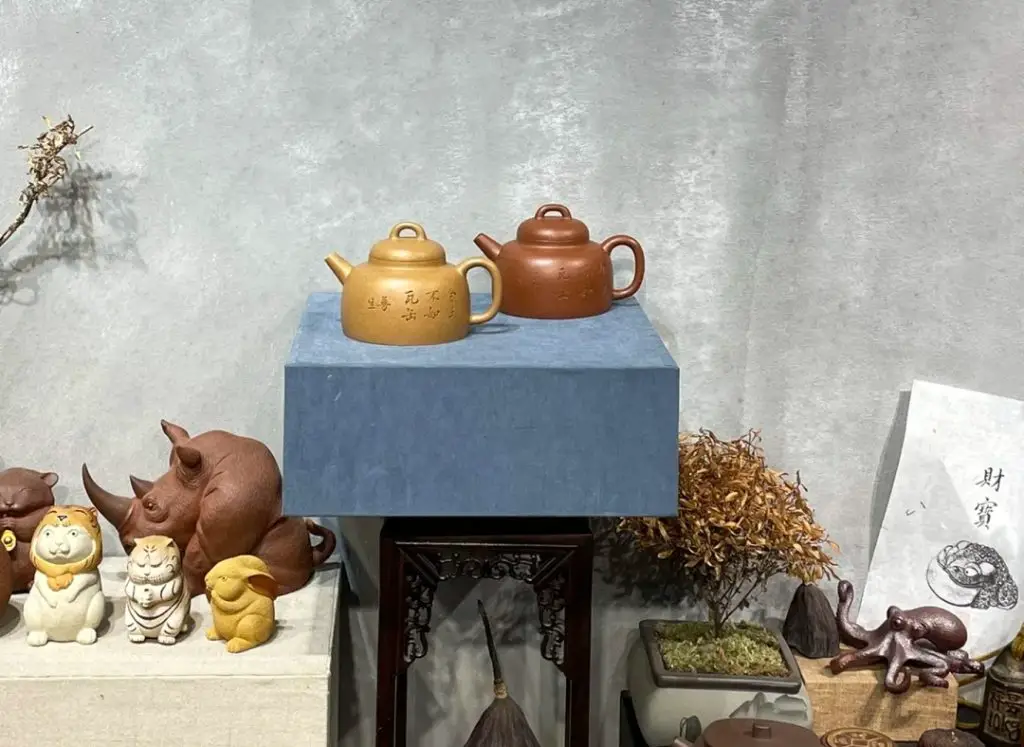
When it comes to choosing a Yixing Clay Teapot, there are several factors to consider.
- The first is the size of the teapot. Yixing Clay Teapots come in various sizes, ranging from small ones that hold a few ounces of tea to larger ones that can hold several cups.
- The second factor to consider is the shape of the teapot. Yixing Clay Teapots come in various shapes, including round, square, and oval.
- The third factor to consider is the type of clay used to make the teapot. Yixing Clay Teapots can be made from various types of clay, including purple clay, red clay, and green clay.
I have carefully selected the 3 optimal size, shape, and unique clay composition for Yixing teapots, tailored to meet your needs.😊✅ Exquisite handmade craft with smooth touch and luxurious appearance.
✅ Features beautiful bamboo pattern design and can be used for decoration or practical use at family gatherings, business meetings, and as gifts.
✅ The tea set has a suitable size, making it convenient to carry and easy to store with thick foam padding inside.
Why do I choose this one?
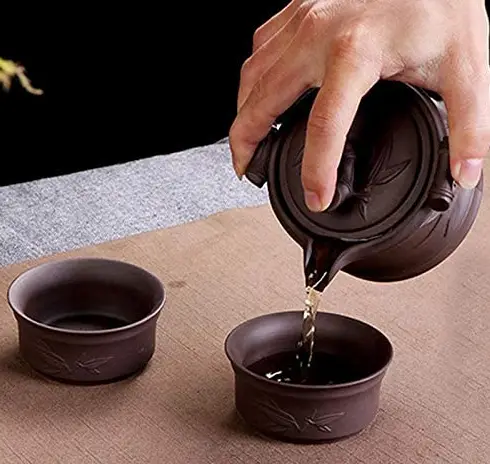
I chose this teapot set because it offers a perfect size, great design, and amazing quality all in one.
Additionally, it’s a great value for the price.
Keep in mind:
Best Yixing Teapot is usually small.
✅ The teapot’s traditional Shipiao shape and build-in strainer add a unique and elegant touch to the set.
✅ Made of genuine purple clay zisha mud, this set is lead and cadmium-free, safe and healthy for brewing different types of tea.
✅ With excellent air permeability and natural, no glaze design, this teapot set is not only practical but also a work of art, making it an exquisite gift for tea lovers and suitable for various occasions.
Why do I choose this one?
- It is handmade by ShaoMeihua, a national artist of Chinese arts and crafts.
- Two more unique and stunning designs to choose from.
- Tea tasting has both the value of enjoyment and collectability.
Keep in mind:
Only use your teapot for one type of tea to prevent the flavors from mixing for such fine art piece.
✅ The Chinese Yixing Zisha teapot is handmade from purple clay yellow and green mud, with a capacity of 370ml.
✅ The teapot features a classic “dragon egg” design with hand-made plum blossom on the body, mouth, and handle, showcasing superb craftsmanship.
✅ With smooth water flow and no dripping, the Yixing teapot is suitable for any tea and has a good collection value.
Why do I choose this one?
- The use of yellow and green mud, and when combined with intricate designs, it creates a truly eye-catching appearance. A rare green or yellow clay with excellent heat-retaining properties, accounting for only 2% of all Yixing clays.
- It becomes more refined and classic-looking with use, while tea stored in it retains its full flavor without decay or discoloration.
Keep in mind:
The teapot has no additional Infuser and has holes to filter the tea.
What are the main types of Yixing clay?
- Zi Ni – a purple clay that is highly porous and retains heat well. It pairs well with darker teas.
- Zhu Sha or Zhu Ni – a bright red clay with medium to low porosity and high iron content. It pairs well with lightly oxidized teas and some Pu-erh teas.
- Hong Ni – a red clay similar to Zhu Ni but slightly less porous and with a sandy texture.
- Duan Ni – a medium-porosity clay that retains heat well and comes in various colors such as golden, beige, and blue.
- Lu Ni – a rare green or yellow clay with excellent heat-retaining properties, accounting for only 2% of all Yixing clays.
Caring for Your Yixing Clay Teapot
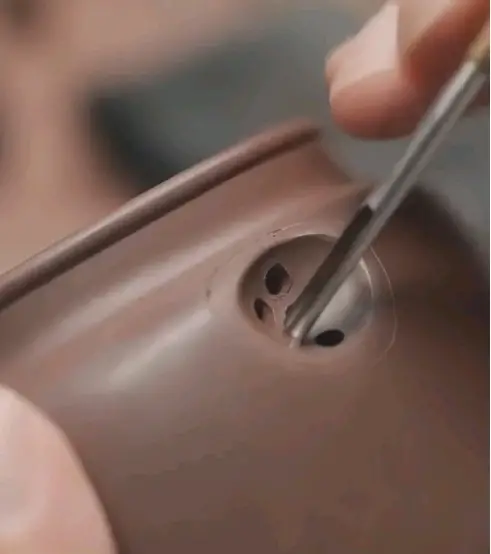
Proper care of your Yixing Clay Teapot is essential to ensure its longevity and to maintain its ability to enhance the flavor and aroma of tea.
Here are some tips for caring for your Yixing Clay Teapot:
- Season your teapot before use by rinsing it with hot water and steeping tea leaves in it several times.
- Only use your teapot for one type of tea to prevent the flavors from mixing.
- Rinse your teapot with hot water after each use and never use soap or detergent to clean it.
- Allow your teapot to air dry completely before storing it.
- Store your teapot in a cool, dry place away from direct sunlight.
How can you tell if a Yixing teapot is real?
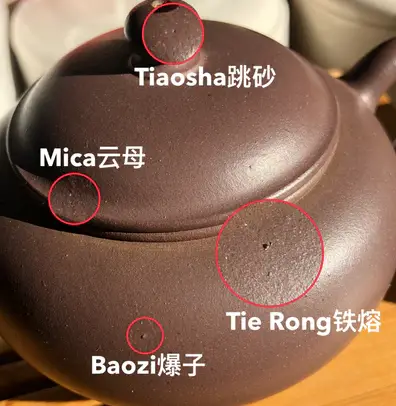
- if a teapot appears to have circular lines or other marks of wheel-thrown pottery, it is likely not authentic Yixing clay.
- Yixing clay often contains impurities, which can be seen as small specs when examining a teapot up close.
- There are 4 types of imperfections that can be found on true Yixing teapots: tiny white spots (mica), tiny black spots (tierong), tiny holes on the surface (tiaosha), and tiny bumps on the surface (baozi).
- Additionally, overly bright colors can indicate a fake.
- While genuine Yixing teapots can be reasonably priced, be cautious of sellers offering fully handmade teapots with intricate details at very low prices, as this is likely a sign of an inauthentic product.
How much should a Yixing teapot cost?
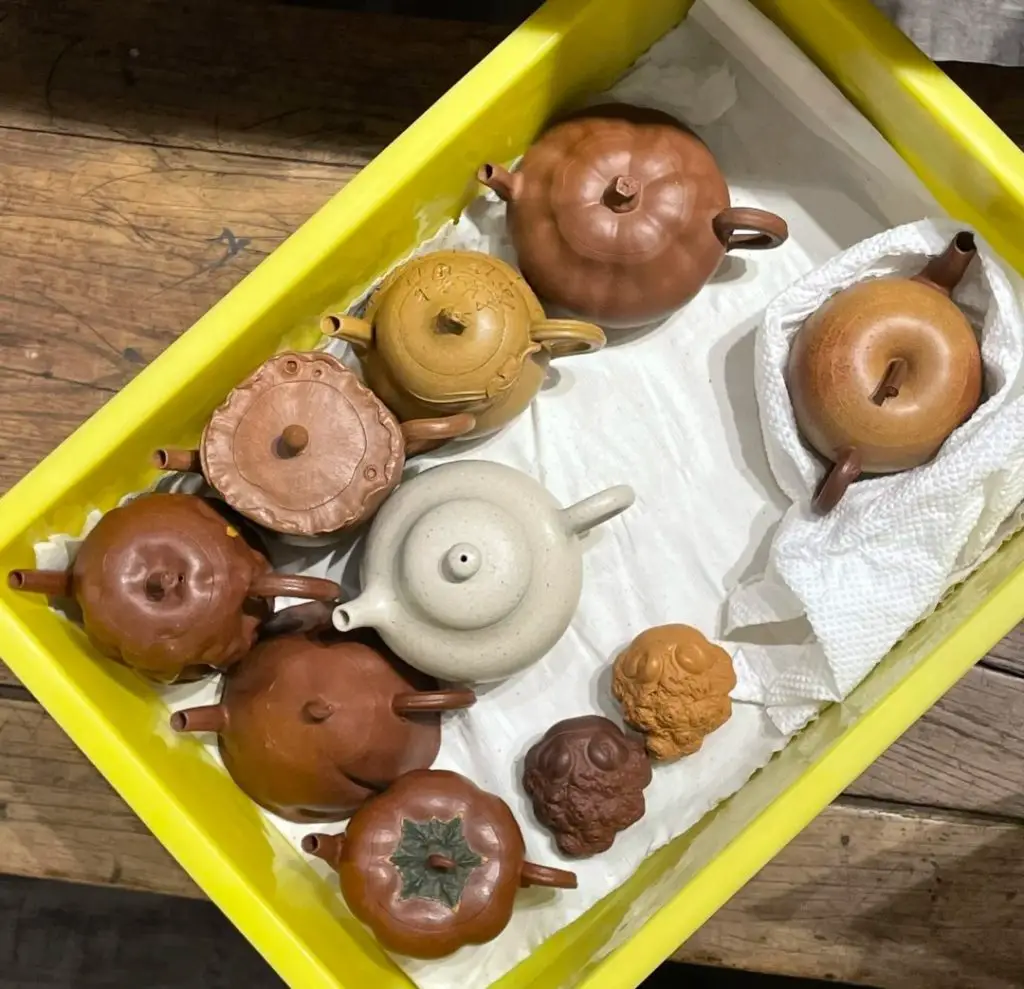
Yixing teapots are priced according to four levels, which are determined by various factors such as the maker’s reputation, the complexity of the design, the type of clay, and its color, as well as whether the surface has been polished or not.
- The first level comprises basic designs that are mass-produced and typically sold in China for around $10-15.
- The second level includes standard teapot designs that are more detailed and intricate than the basic ones, and generally sell for between $35-60 in China.
- The third level encompasses collector teapots made by reputable artisans, featuring either traditional or modern styles, and could fetch anywhere between $150-800.
- The fourth level consists of antique Yixing teapots, which can be priced anywhere between $3,000 to $100,000 or even more.
How to Use a Yixing Teapot?
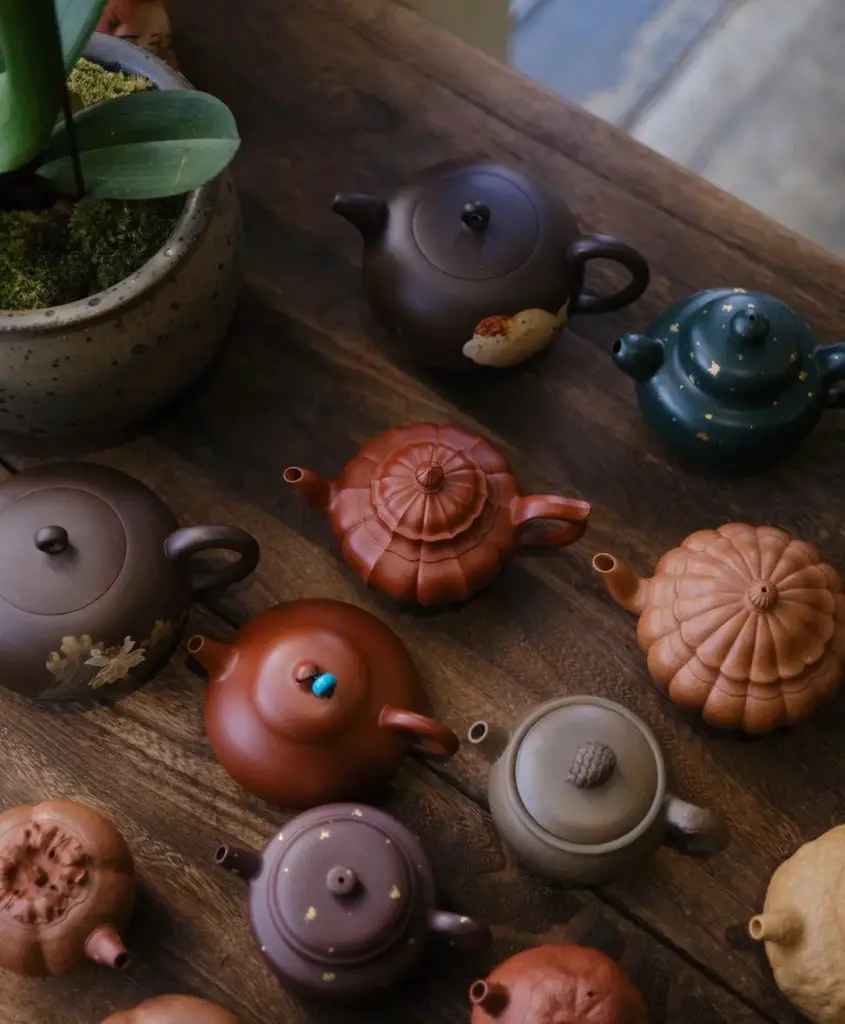
- Choose oolong, black, or pu-erh teas for Yixing teapots. Pu-erh tea recommendations.
- Season the teapot with boiling water before first use.
- Use 1g of tea for every 15ml of water.
- Brew at the appropriate temperature for 1-3 minutes (oolong and black) or 3-5 minutes (pu-erh).
- Pour all tea out to avoid over-brewing.
- Serve in a pitcher and individual cups.
- Enjoy the tea’s unique flavors and aromas.
Yixing Teapot History:
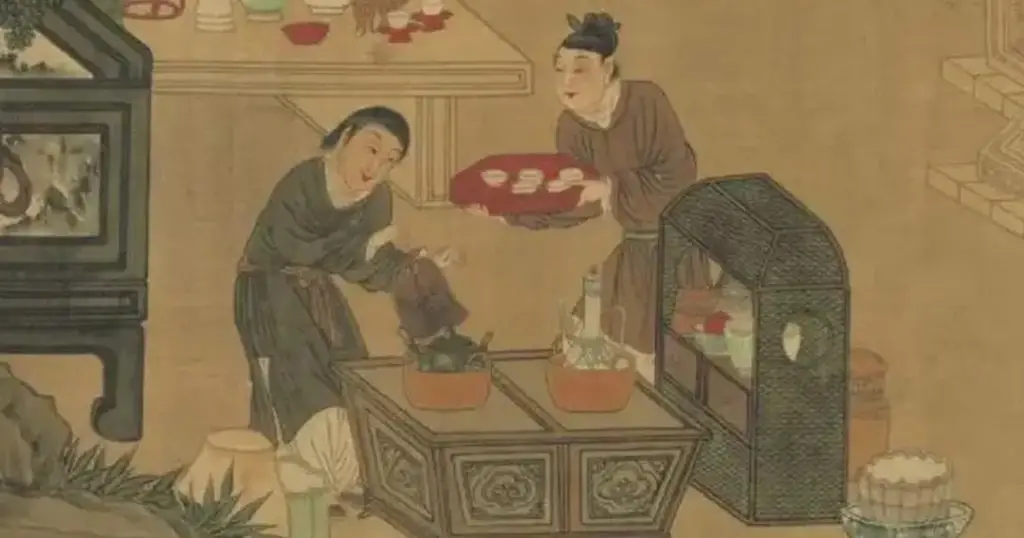
- During the Ming Dynasty (1368-1644 CE), the first teapots in the world were created in Yixing. Over time, the reddish stoneware teapots from this region gained a reputation among Chinese tea lovers as the “best vessel for brewing tea.”
- By the late 17th century, Yixing teapots had made their way to Europe alongside the first shipments of tea and were used as models for the earliest teapot designs in countries such as the Netherlands, Germany, and England.
- Yixing enjoyed long periods of prosperity during the Ching Dynasty, and the manufacturing of Yixing teapots came to a halt during the 1930s and 1940s due to war and revolution.
- The Chinese government established communes in 1954 to train a new generation of potters and ensure that the great traditions would be preserved.
- In the mid-1980s, Yixing teapots were rediscovered by Chinese art collectors and tea connoisseurs outside of China, and interest in them has grown in the United States as well.
Conclusion
Yixing Clay Teapots are a must-have for any tea enthusiast who wants to enhance the flavor and aroma of their tea.
By following the tips outlined in this comprehensive guide, you can choose the perfect Yixing Clay Teapot for your needs and care for it properly to ensure its longevity.
FAQ:
Why are Yixing teapots so expensive?
Yixing teapots are often expensive due to several reasons.
- First, they are made from high-quality clay found only in the Yixing region of China, which is renowned for its unique composition and properties that enhance the flavor of tea.
- Second, the production process of Yixing teapots is extremely labor-intensive, with many skilled artisans involved in each step, from molding and carving to firing and polishing.
- Additionally, Yixing teapots are often unique pieces of art, with intricate designs and patterns that require great skill and creativity to create.
- Finally, the rarity and historical significance of some Yixing teapots can also contribute to their high price.
What makes Yixing teapots unique?
Yixing teapots are unique for several reasons.
- Firstly, they are made from a special type of clay found only in the Yixing region of China, which is believed to have unique properties that enhance the flavor and aroma of tea.
- Additionally, Yixing teapots are typically unglazed, allowing the porous clay to absorb the flavors and oils of the tea over time, resulting in a more flavorful brew with each use.
- Furthermore, Yixing teapots are often handcrafted by skilled artisans, resulting in a wide variety of intricate and beautiful designs.
- Finally, Yixing teapots are highly prized by tea aficionados due to their unique properties and historical significance, making them a rare and valuable addition to any tea collection.
What is the rarest Yixing teapot?
- Some of the most highly prized Yixing teapots include those made by renowned masters like Gu Jingzhou, Shi Dabin, and Chen Mansheng, as well as those with intricate designs or unique features such as multiple spouts or handles.
- Some antique Yixing teapots from the Ming and Qing dynasties are also considered rare and highly valuable.
Why are Yixing teapots so small?
Yixing teapots are so small because this practice enables the rapid emptying of the entire pot after each steeping, ensuring that the tea served is fresh, hot, and strong, while avoiding the cooling and bitterness that can result from prolonged steeping of tea leaves in a larger pot.
